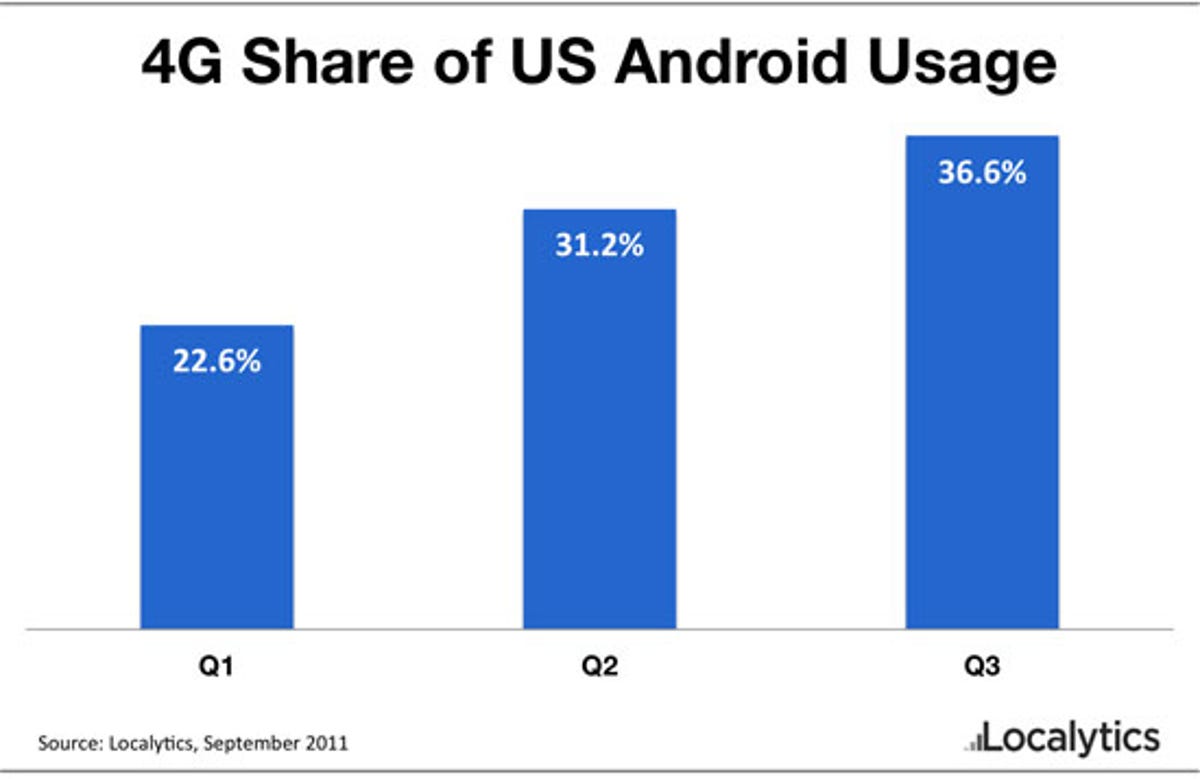
Localytics
Android phones seem to have cornered the market on 4G, according to a report out yesterday from Localytics.
Gazing at the smartphone landscape, the mobile analytics firm found that 37 percent of all Android phones are now 4G-enabled. That percentage is likely to surge even further as this year alone the number of 4G Android phones have jumped by more than 50 percent.
Of course, 4G is a fuzzy term that’s often used loosely to describe any type of high-speed mobile access. For the purposes of its study, Localytics defines a 4G device as one that taps into LTE, WiMAX, or HSPA+.
Some consider HSPA+ still more of a 3G technology, though it can offer speeds comparable to those found on LTE and WiMax networks. AT&T has been using HSPA+ as it just now starts to ramp up its true 4G LTE network.
Related stories:
Report: LTE to dominate WiMax in 4G market
AT&T launching LTE on Sept. 18, at long last
Verizon 4G LTE now reaches more than half the U.S.
Sprint to launch own 4G LTE network in early 2012 (scoop)
Comparing 4G coverage
Among the current crop of 4G phones, the most popular one is the HTC Thunderbolt from Verizon, according to Localytics, followed by the HTC Evo 4G from Sprint, the Samsung Droid Charge from Verizon, and the Samsung Epic 4G from Sprint.
Looking at other phones in the top 10, T-Mobile’s HTC MyTouch 4G and Samsung Galaxy S 4G ranked fifth and ninth, respectively, while AT&T’s Motorola Atrix took sixth place.
Apple has reportedly been testing 4G LTE for the iPhone, and some reports have suggested that the iPhone 5 may turn out to be a 4G device. However, the company has been cautious about jumping too quickly onto the 4G bandwagon due to some of the technology’s present limitations. In April, then-COO Tim Cook said that the first-generation LTE chipsets “force a lot of design compromises” that the company is unwilling to make.
Among the major U.S. carriers, Verizon Wireless has been on fire rolling out its 4G LTE network, reaching more than half of the country as of last month. AT&T has been a bit of a laggard, just recently launching LTE in five different cities with plans to cover 15 in total by the end of the year.
Sprint, which has long relied on WiMax for its high-speed access, is expected to launch a new LTE network of its own early next year. And T-Mobile, which uses HSPA+, may team up with potential future parent AT&T to speed up the roll out of 4G LTE to their collective customers.



